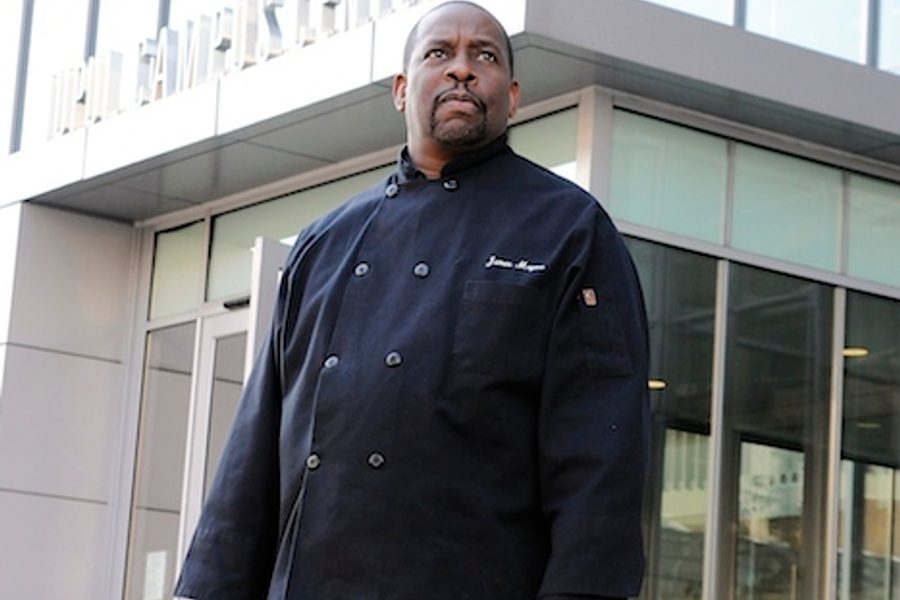
During the first weeks of 2012, thousands of union members and supporters from across the Midwest flooded the Indiana Statehouse, chanting “Kill the Bill” and singing “Solidarity Forever.” Despite their protests, the Indiana Senate passed right-to-work legislation on February 1. The vote paved the way for Indiana to become the 23rd state — and the first in the “Rust Belt” — to adopt the law allowing workers to opt out of paying union fees even while benefiting from collective bargaining. Gov. Rick Snyder of neighboring Michigan recently cited Indiana’s example as his motivation for reversing course and supporting right-to-work legislation, which he signed into law Tuesday.
On the day the Indiana Senate approved the right-to-work bill, food service workers at Indiana University-Purdue University at Indianapolis (IUPUI) gathered less than a mile away. Without the glare of the television cameras focused on the Statehouse debates, the new members of UNITE HERE Local 23 voted to approve their first-ever collective bargaining agreement with the IUPUI contractor Chartwells Dining Services. James Meyers, a lead food service worker at IUPUI, was thrilled with the new contract’s wage increases, improved health benefits, and recognition for seniority. But what meant the most to him was the intangible benefit that came with finally being treated as a partner at his workplace. “I felt like I had won a million dollars,” Meyers said. “I got to tell the manager, ‘You are the boss, I understand that. But I am a man, too, and we can respect each other.’”
On Thursday, another group of Indianapolis workers got the chance to experience the tangible and intangible benefits of union membership. Maintenance and food service workers working for the contractor ARAMARK at Marian University won an NLRB election to be represented by UNITE HERE. The pro-union vote was an overwhelming 54-1. “I am not surprised by the result,” said maintenance worker and organizing committee member Stacy Shirar, as workers hugged and high-fived around him. “People have been fed up with being walked on. We just want to be heard and have a say in what is going on here.”
Despite Indiana’s status as a newly minted right-to-work state where anti-labor Republicans now enjoy a super-majority in the General Assembly, service sector workers are racking up organizing successes across the state’s capital. Indianapolis International Airport food service workers won union recognition and negotiated a contract with SSP America in late 2010. Butler University food service workers appear poised to gain recognition through UNITE HERE. SEIU has been organizing local security guards for three years.
A five-year community-wide campaign by UNITE HERE to organize the city’s hotel workers has not yet broken through, and Indianapolis remains the country’s largest city without a unionized hotel. But the hotels’ practice of relying on low-paid contract labor has been reduced, in part due to successful wage and hour litigation against one contractor accused of forcing hotel housekeepers to work off the clock.
The service-sector organizing in Indiana represents an effort to reverse several alarming trends for workers in the state. As recently as 1989, one in every five Indiana workers belonged to a union. Today, less than 12 percent of the Indiana workforce is unionized. Income inequality is at a national level not seen since before the Great Depression, and the Center on Budget and Policy Priorities reports that Indiana’s wage gap has grown faster than those of all but five states.
But economists like John Schmitt of the Center for Economic and Policy Research says the income gap can be bridged by union organization among workers in traditionally low-wage jobs. The U.S. labor movement’s iconic success stories are in the manufacturing sector, but Schmitt says the same script can be followed to improve the lives of service-sector workers like Meyers.
“In the early 19th and 20th century, manufacturing jobs were terrible jobs. The jobs paid badly, they were unsafe, and they required brutally long hours,” Schmitt says. “But unionization changed all that, and there is every reason to believe that we can see the same effect in the service sector now.” Schmitt’s research shows that unionization raises service-sector workers’ wages by over 10 percent, and that unionized service-sector workers are also far more likely to have employer-provided health insurance and pension plans.
After the successful NLRB election, Marian University custodian James Holder expressed optimism about negotiating a contract that would offer such benefits. When the college contracted out his work after he had spent nearly 20 years on the job, Holder was disillusioned by disrespectful treatment from his new supervisors and random firing of longtime Marian employees. “I wasn’t sure what to do about it, and I was on the verge of quitting,” he says. “I felt very alone. But then others began talking about having the same problems, and I realized that a union was the way I could make a difference. That was more than a year ago, and it has been a long road, but look at what happened today. 54-1 for the union. I am sure not alone now!”
He notes, however, that Indiana’s right-to-work law will pose difficulties for the newly unionized workers. “Laws like that can make a union’s road more rough. There is no doubt about it,” he said. “It ain’t going to come to you sitting down, but it’s worth it.”






